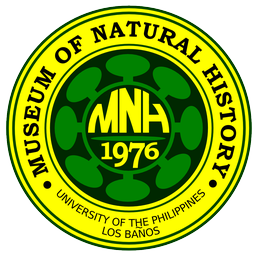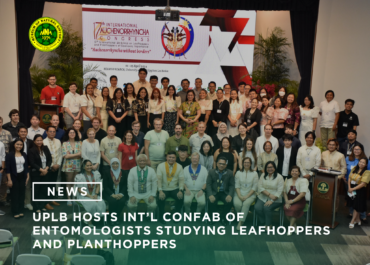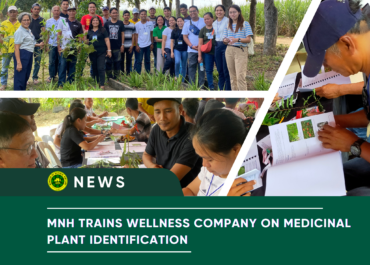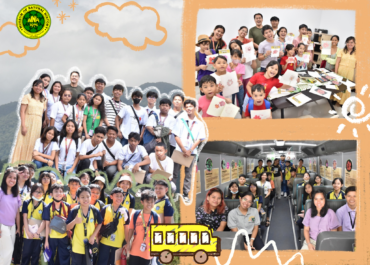
Last 20-23 June 2023, the UPLB Museum of Natural History’s DOST-NICER funded CAVES program held an online training on “CAVES 101: Into the Cave and Karsts Areas of Region IV-A”. The event was attended by the NICER CAVES program’s partners from selected state universities and colleges and local government units in CALABARZON (Region IV-A).
Around 30 staff members and personnel from Laguna State Polytechnic University, Batangas State University, Southern Luzon State University, the Community Environment and Natural Resources Office-Tayabas, and several municipalities across the region attended the event.
For the past three years, the museum’s NICER CAVES team has been conducting fieldwork and research on flora-, fauna-, and microbes-rich cave and karst environments in CALABARZON with the help of its partners in the field.
The training, according to the organizers, was held to disseminate the outputs of the NICER CAVES program’ research on cave ecosystems and to capacitate its partners. The event also aimed to highlight the unwavering support of the Department of Science and Technology (DOST)’s Science for Change Program and the Philippine Council for Agriculture, Aquatic, and Natural Resources Research and Development to biodiversity research in the region.
In her remarks during the opening of the training, MNH Director and NICER CAVES program leader Dr. Marian P. De Leon underscored the need to know “what makes cave and karst areas, with their specialized hydrogeological formations, unique in terms of biodiversity.”
“While there are more than 3,000 known caves in the Philippines, only 20% have been well- explored and surveyed in terms of bioresources… there is really a need for a research program, such as our NICER CAVES, to address the knowledge gap,” Dr. De Leon said.
Topics discussed during the training ranged from an introduction to caves, cave fauna, karst flora, cave microbes, and cave management.
On the first day of the training, Dr. Ireneo L. Lit, Jr., Professor at UPLB’s Institute of Biological Sciences (IBS) and one of MNH’s curators, gave an introduction on caves and talked in depth about cave ecosystem, community ecology, and energy flow. Dr. Lit leads Project 3 (Terrestrial Arthropod Diversity Assessment of Cave and Karst Areas in CALABARZON) of the NICER CAVES program.
Afterwards, Dr. Decibel F. Eslava, Professor at the School of Environmental Science and Management and also a museum curator, gave a lecture on cave types, cave formations, and also discussed cave hydrogeology.
The next day’s lectures covered cave fauna, specifically mammals, birds, other vertebrates, as well as terrestrial snails in karst ecosystems.
Dr. Anna Pauline O. de Guia, Professor at the Animal Biology Division of IBS and MNH curator discussed on cave mammals while Dr. Juan Carlos T. Gonzalez, a professor at the Animal Biology Division and MNH curator, gave a talk on birds and other vertebrates. Thereafter, Julius A. Parcon, university researcher and proponent of NICER CAVES Project 1 (Terrestrial Vertebrates and Invertebrates Assessment of Caves and Karst Areas in CALABARZON) gave a lecture entitled “Introduction to Molluscs with Emphasis on Land Snails in Karst Ecosystems.”
The third day of the training tackled more on invertebrates, specifically the true insects, arachnids, mites and allies, and other arthropods. Entomologist and university researcher Cristian C. Lucañas talked about insects and other arthropods. Dr. Aimee Lynn B. Dupo, Professor at the IBS’ Environmental Biology Division and MNH curator presented on “A Beginner’s Guide on Cave-dwelling Arachnids: A Virtual Learning Approach to their Diversity.” Lastly, Jeremy Carlo B. Naredo, MNH’s university researcher gave a lecture on mites, its allies, and other arthropods.
On the last day of the training, For. Jefferson G. Cruz, Protected Areas Management and Biodiversity Conversation Section Chief of DENR CALABARZON gave a lecture on “National Caves and Cave Resources Management and Protection Act and Related Policies.” This was followed by separate lectures on karst flora by Assoc. Professor and MNH curator Annalee S. Hadsall from the Plant Biology Division of IBS and For. Michelle Alejado-San Pascual, MNH’s university researcher and leader of NICER CAVES Project 2 (Floristic Assessment of Cave and Karst Areas in CALABARZON).
Researchers from NICER CAVES Project 4 (Phenomic, Genomic, and Metagenomic Analysis of Microbiome of Bat Gut and Guano from Caves in CALABARZON) then gave lectures on cave microorganisms. Dr. Noel G. Sabino, Assoc. Professor at the Microbiology Division of IBS and MNH curator gave a lecture entitled “Cave Microbes: Studying Bacteria in Caves.”
Finally, Dr. Marian P. De Leon talked about cave fungi through her presentation “Is it more FUN with cave FUNgi?” which was followed by a lecture on “Cave Microorganisms: Omics Approaches to Profile and Perturb Cave Microbes” by Dr. Ronilo Jose D. Flores.
Search
Archives
Categories
- Announcement (21)
- Feature (21)
- News (141)
- Press Release (55)
- Research (4)
- Services (3)



